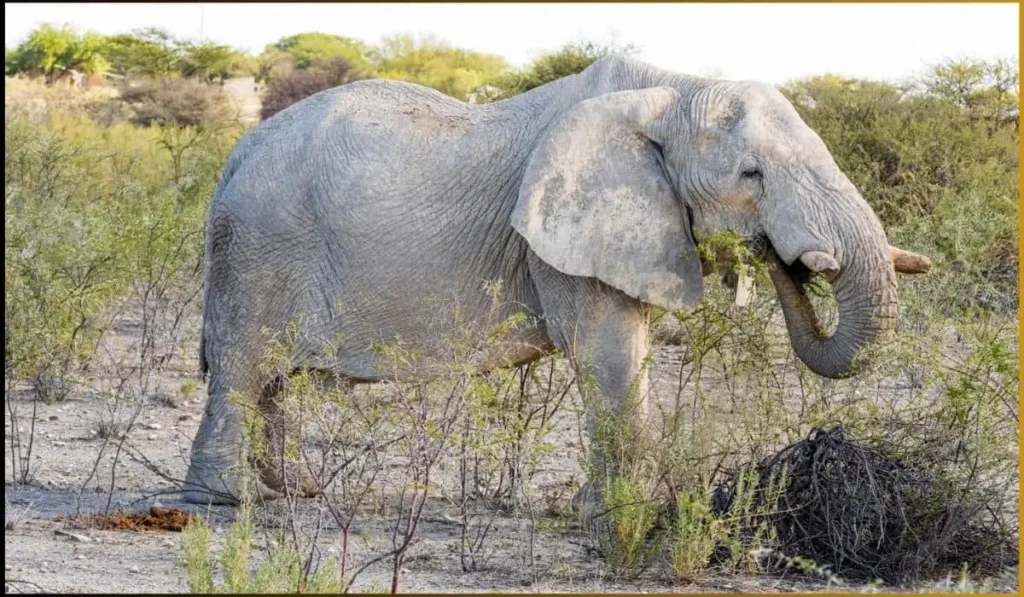Have you ever wondered what do elephants eat? They eat grasses, fruits, and leaves.
They also enjoy bark and roots. Elephants eat all day long.
Their diets change with the seasons. Let’s dive into the fascinating world of elephant diets!
Elephants’ Eating Habits: Nature’s Big Eaters
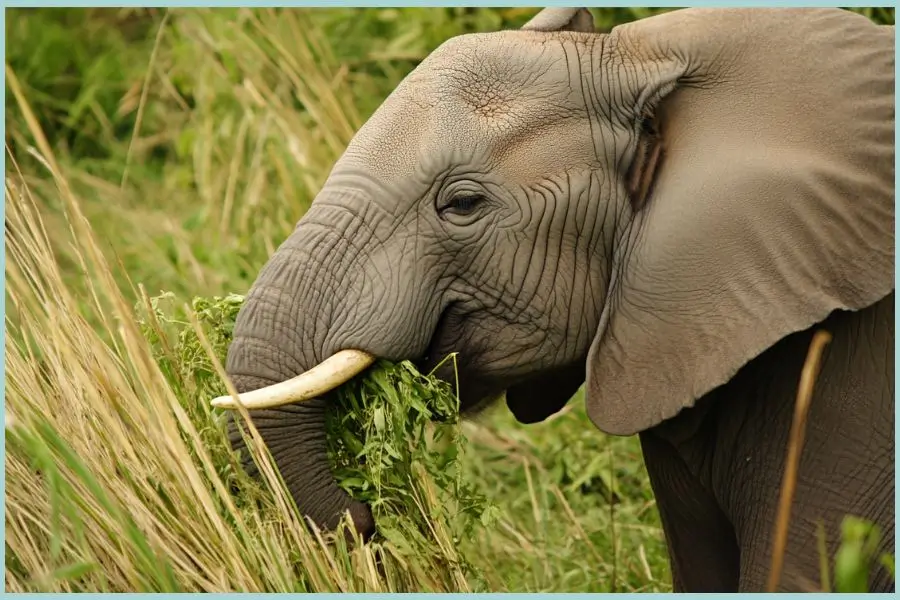
Elephants are herbivores, meaning they only eat plants.
These animals need lots of food daily.
They spend up to 18 hours eating every day! (World Wildlife Fund)
Their diet includes grasses, leaves, twigs, fruits, bark, and roots. They consume up to 660 pounds (300 kg) of food each day.
Grasses and Browsing
Elephants feed on grasses during the wet season.
In dry seasons, they switch to woody plants.
African and Asian elephants’ diets can vary based on their habitats.
What’s on the Menu for Elephants?
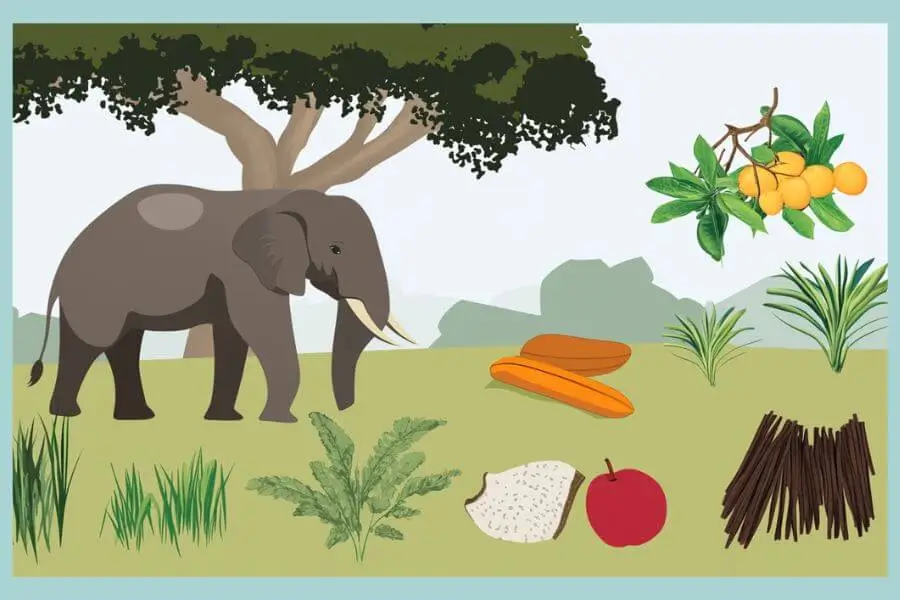
- Grasses
- Leaves
- Bark
- Fruits
- Roots
Elephants aren’t picky eaters. They munch on whatever plants are available.
What do Elephants Eat in Zoos

Zoos work hard to feed elephants properly, providing hay, fresh fruits, and vegetables (Smithsonian’s National Zoo). They provide:
- Hay and grasses
- Fresh fruits and vegetables
- Special vitamin supplements
Enrichment activities help zoo elephants forage naturally.
What Do Elephants Eat in the Wild
Grasses
Grasses are a primary food source for elephants. Especially during the wet season, they graze large grass fields to satisfy their enormous appetites.
Leaves and Foliage
In the dry season, elephants rely on leaves and twigs from trees. These plants provide elephants with essential nutrients when other food sources are unavailable.
Bark and Twigs
Elephants also feed on tree bark. The bark is rich in fiber and contains important nutrients like calcium. Elephants use their trunks and tusks to strip bark from trees and dig up roots.
Fruits and Seeds
Elephants love fruits and actively search for them. Fruits provide sugar and moisture, making them a valuable resource.
Interestingly, elephants play a key role in seed dispersal.
They help regenerate plant life as the seeds they eat pass through their digestive system and are dropped in new locations.
Seasonal Changes in Diet

Elephants’ diets change based on seasonal availability. During the wet season, they feast on lush green grasses and leaves.
In the dry season, elephants depend more on bark, twigs, and roots. Their ability to switch diets ensures their survival in different environments.
How Much Do Elephants Eat?
Elephants are known for their large appetites.
On average, they consume between 50-150 kg of plant matter daily.
This is essential due to their inefficient digestion system.
They spend about 16 hours per day eating.
African vs. Asian Elephants: Dietary Differences
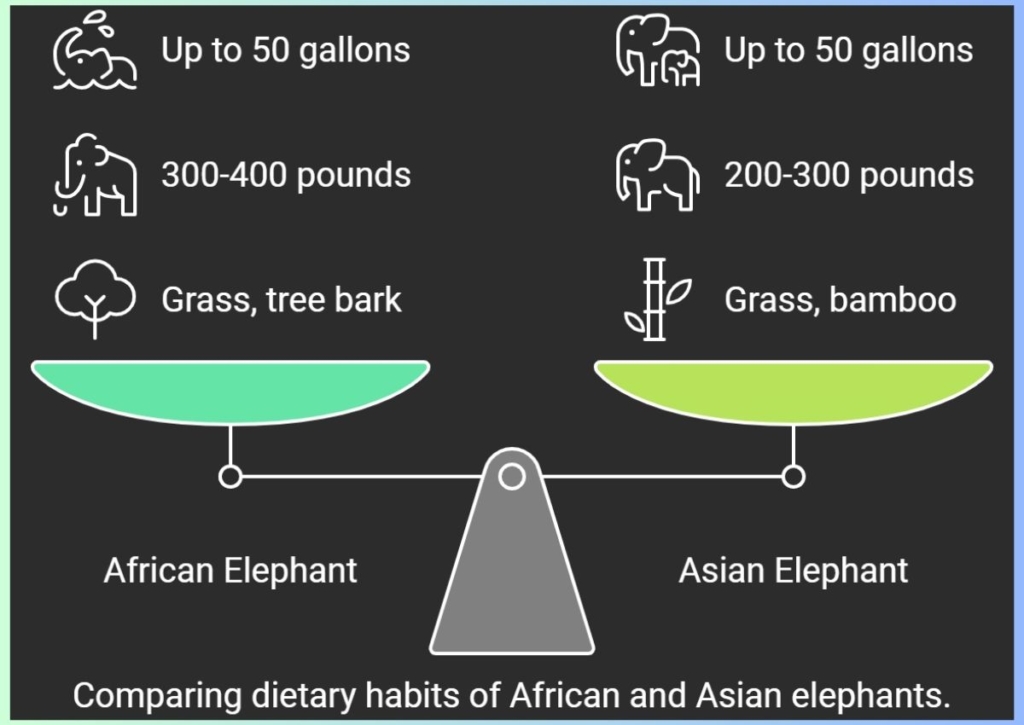
African and Asian elephants have different eating habits. Let’s compare:
African Elephants
African elephants live in savannas, forests, and deserts. Their diet includes grasses, trees, and shrubs.
They adapt their eating habits based on their location.
- Prefer grasses in savannas
- Eat more tree parts in forests
- Consume up to 660 pounds daily
Asian Elephants
Asian elephants are found in tropical forests and grasslands.
Their diet includes:
- Favor grasses, bamboo, leaves, and fruits.
- Eat bamboo when available
- Need about 330 pounds of food daily
Elephant Diet Comparison Table
| Characteristic | African Elephants | Asian Elephants |
| Preferred Food | Grasses (in savannas), Tree parts (in forests) | Leaves and branches |
| Unique Diet Item | More varied diet | Bamboo (when available) |
| Daily Food Intake | Up to 660 pounds (300 kg) | About 330 pounds (150 kg) |
This table provides a clear comparison of the diets of African and Asian elephants.
How Elephants Eat

Elephants use their trunks like we use our hands. They:
- Grab grass and leaves
- Strip bark from trees
- Pluck fruits from branches
Tusks help elephants dig for roots and water.
Water: A Crucial Part of Elephant Diets
Elephants need lots of water.
They drink up to 50 gallons daily! Source: World Wildlife Fund
Water helps elephants:
- Digest tough plant material
- Stay cool in hot climates
- Maintain healthy skin
Elephants as Ecosystem Engineers
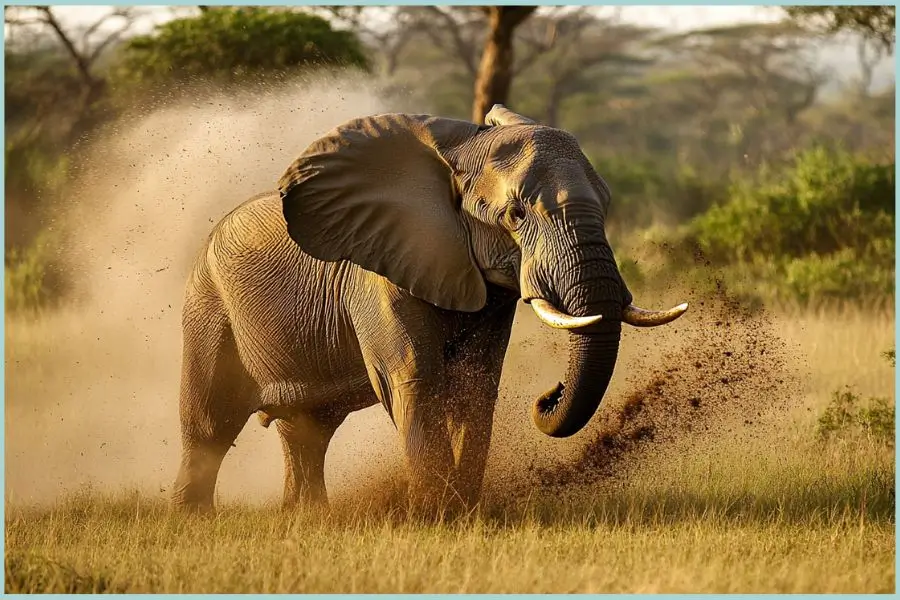
When elephants eat, they shape their environment. They:
- Create clearings in forests
- Spread seeds through dung
- Maintain grasslands by preventing overgrowth
Challenges Facing Elephant Diets Today
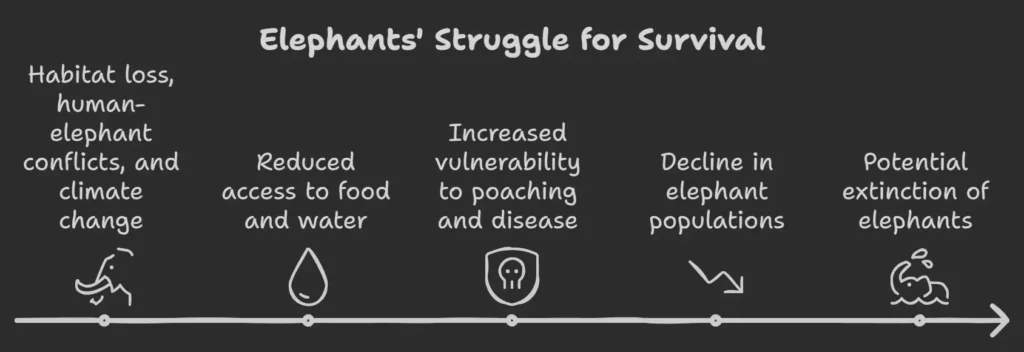
Elephants face many food-related challenges:
- Habitat loss reduces food sources
- Climate change affects plant growth
- Human-elephant conflict over crops
Conservation efforts are crucial to protect elephant habitats and food sources.
Fun Facts About Elephant Eating Habits
Did you know?
- Elephants sometimes eat soil for minerals
- Baby elephants learn to use their trunks by watching adults
- An elephant’s trunk has over 40,000 muscles!
Conclusion: Why Elephant Diets Matter
Understanding what elephants eat is crucial for conservation. Their diets:
- Shape ecosystems
- Influence migration patterns
- Affect human-elephant interactions
By protecting elephant habitats, we ensure they have enough to eat. This helps maintain healthy elephant populations and diverse ecosystems.
FAQs About Elephant Diets
-
How much do elephants eat per day?
Elephants eat between 50-150 kg of food daily.
-
What’s the most important part of an elephant’s diet?
Grasses, leaves, and fruits are essential.
-
How do elephants find water?
Elephants use their memory to locate water sources.
-
What do baby elephants eat?
They drink their mother’s milk until about two years old.
-
How has human activity affected elephant feeding habits?
Deforestation and climate change have reduced food availability, leading to conflict with humans.
-
Do elephants eat peanuts?
No, peanuts aren’t part of their natural diet.
-
How much do baby elephants eat?
Baby elephants drink milk for 2-3 years before eating plants.
-
Can elephants get drunk from fermented fruits?
It’s a myth. Elephants don’t eat enough fermented fruit to get drunk.
-
Do elephants eat meat?
No, elephants are strictly herbivores. They eat only plants.
-
How do elephants find food in the wild?
They follow seasonal patterns and remember food locations.
Remember, protecting elephant habitats ensures these amazing animals have enough to eat. Let’s work together to keep elephants and their ecosystems healthy!

